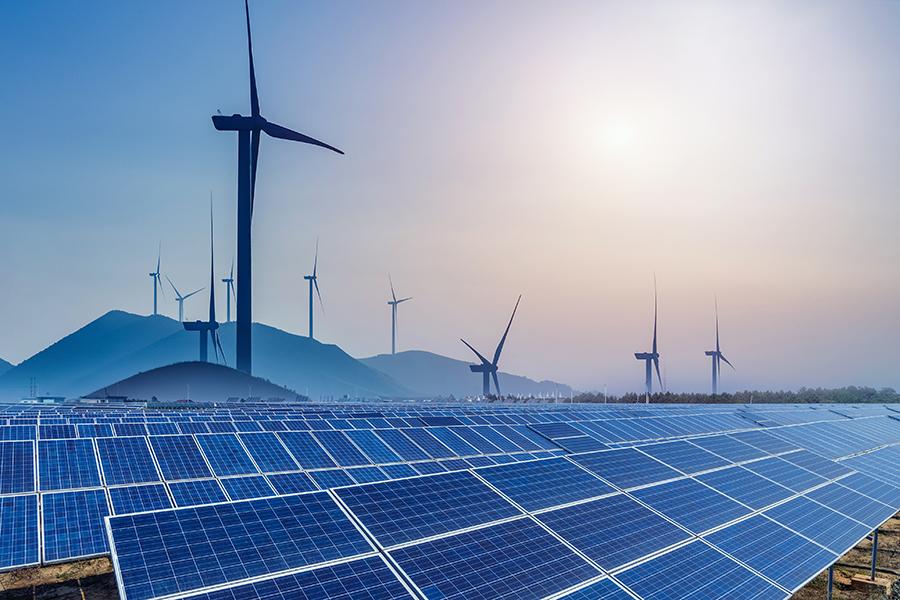The need to globalise solarisation
Renewable energy took a decade to become 1/3rd of energy capacity, but this is not the ideal pace considering current needs. The solution lies in collaboration of countries and continents
Renewable Energy (RE) is the future. With that said, one can argue that the future has arrived, in parts at least. Worldwide acceptance towards green energy is giving the sustainable energy sector more market share every year. The growth is consistent, with each year out-performing the previous, leading renewable energy to account for 1/3rd of global energy capacity.
It’s fair to state that the growth trajectory is incredible, and considering that it took only a little more than a just decade to reach this position, we could call it phenomenal. However, the most important question is, is this satisfactory? The goal of green energy transition is to solve growing energy scarcity and reduce dependency on fossil fuels in order to move towards a fully sustainable energy landscape. Therefore, to identify success, we need to compare renewable energy growth with the current scenario.
According to WHO’s estimates, currently, more than 7 million people die every year from pollution, up from 4.2 million in 2016. Fossil fuel consumption has increased globally from 94,462/twh in 2000 to 1,33,853/twh now. The rise in population (currently 7.7 billion) indicates a steady growth in energy demand worldwide. In comparison, the fact that renewable energy took a decade to become 1/3 of energy capacity is not the ideal pace, considering we might not have two more decades to wait for RE to catch up.
Leaders need to take on more responsibility Like every year, Asia accounted for more than 60 percent of the new RE energy capacity in 2018. However, we need to point out here that energy crisis is not a continent or country-specific issue. It is a global problem, and the solution lies only in collaboration of countries and continents. The countries with large-scale solar manufacturing and higher global market share need to take leading roles in not just in-country solar installation but supporting new markets to grow through economic, technological and strategic support. Fortunately, we are already witnessing the emergence of new markets such as Oceania (17.7 percent) and Africa (8 percent), which are showing rapid growth in renewable capacity installation. This indicates intent, and the only thing these developing countries need is support.
Solar is the best replacement for fossil fuel and its year-over-year growth that is surpassing wind and even hydro-power (the biggest shareholder in RE energy mix) proves that. However, the growth rate is still far from being at par with the energy demand climate change and pollution levels. We need to understand that there are very real issues at play here, and choice of green energy transition was not actually a choice for us at the time we made an effort to change. Therefore, it is without an iota of doubt that we need to make green energy transition a focused mission.
Hurdles in path of the future
RE is the ideal future of energy in our world. While it is showcasing growth, it will not be the main source of power unless all stakeholders across the planet make a collaborative effort to adopt RE.
Issues like the US government policies directly favouring fossil fuel generation, mega tender cancellations worldwide, China’s policy shift, feed-in-tariff cut in Japan and policies levying taxes and duties on solar industry in India have stifled its growth across the world. And although solar is expected to surpass 100 GW capacity addition in 2019, the installation is majorly focused on dominating countries. Centralisation of solar growth will not speed up global green energy transition. New markets like Egypt, Spain, Argentina, Vietnam etc have to be brought into the fold to flourish under the sun.
Anticipated growth trends are opportunities
Growing demand worldwide will introduce better technology adoption in the solar sector, which could be an opportunity for developing countries to access more efficient and affordable technology, leading to quicker solar adoption. Boost to energy storage market is also expected to make future of global solar/RE growth brighter.
In conclusion, even though renewable energy has grown reliably in past five years, but the growth trajectory has to speed up for the sake of Sustainable Development Goals. Growing solar acceptance in the world presents greater opportunities for developing countries like India for country wide solarisation and saving billions (India spent $87.7 billion on importing 220.43 million tonne of crude oil in 2017-18).
However, to realise the potential, countries need to modify their targets, considering the global requirements and the threats we are dealing with. Collaborative and rapid solarisation of the world is the only answer for our energy and climate woes.
The author is managing director & CEO of Vikram Solar
The thoughts and opinions shared here are of the author.
Check out our end of season subscription discounts with a Moneycontrol pro subscription absolutely free. Use code EOSO2021. Click here for details.

